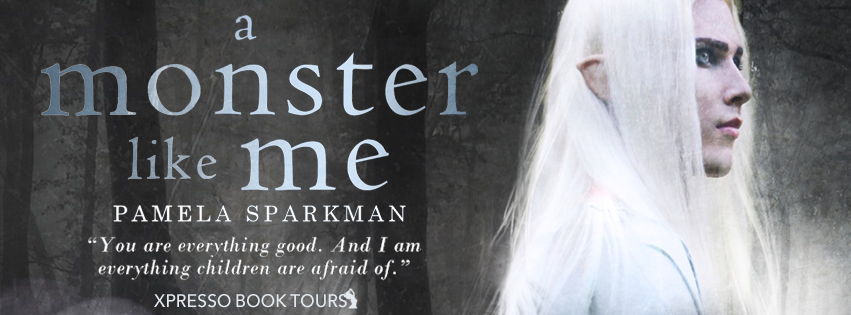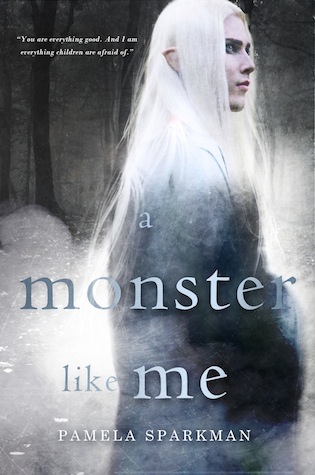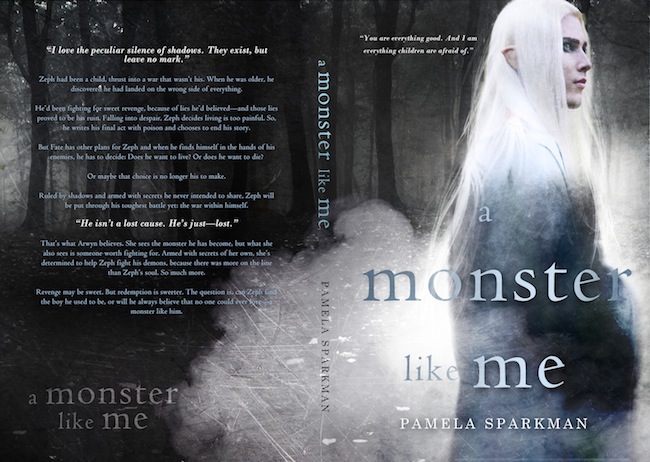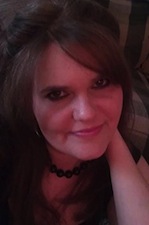Demon
Freaks
Freaks
J.R.R.R.
(Jim) Hardison
(Jim) Hardison
Publisher: Fiery Seas Publishing
Release Date: October 3, 2017
Genre: YA Horror/Comedy
Book Description:
It’s the night before the SAT
test. The forces of darkness are stirring.
test. The forces of darkness are stirring.
Twin brothers, Bing and Ron
Slaughter, know they’ve got to cram like their lives depend on it because their
college plans sure do. If they don’t ace the test, they’ll be doomed to spend
the rest of their days flipping burgers at the McDonald’s their parents run.
That’s why they hatch a plan to meet up with the members of their punk band,
the Ephits, spend the night studying at a secluded cabin in the woods, and
maybe squeeze in a little jamming. What could go wrong with a brilliant plan
like that?
Slaughter, know they’ve got to cram like their lives depend on it because their
college plans sure do. If they don’t ace the test, they’ll be doomed to spend
the rest of their days flipping burgers at the McDonald’s their parents run.
That’s why they hatch a plan to meet up with the members of their punk band,
the Ephits, spend the night studying at a secluded cabin in the woods, and
maybe squeeze in a little jamming. What could go wrong with a brilliant plan
like that?
Ancient evil. That’s what.
As a cataclysmic lightning storm
rolls in, Bing, Ron and the rest of the Ephits find themselves tangled in a
sinister plot to summon a demon. Yes, demons are real. To survive the night,
the band must find a malevolent artifact, battle bloodthirsty monsters and
stand against the most dangerous and powerful foe humanity has ever faced…the
Golfer’s Association.
rolls in, Bing, Ron and the rest of the Ephits find themselves tangled in a
sinister plot to summon a demon. Yes, demons are real. To survive the night,
the band must find a malevolent artifact, battle bloodthirsty monsters and
stand against the most dangerous and powerful foe humanity has ever faced…the
Golfer’s Association.
Teaser:
“Wait, wait, wait,” Ron
interrupted. “The Golfers Association? Don’t you mean insane cultists or Satan
worshipers or evil wizards or something?”
interrupted. “The Golfers Association? Don’t you mean insane cultists or Satan
worshipers or evil wizards or something?”
“Insane cultists, Satan
worshipers and evil wizards are like elderly nuns compared to the Golfers’
Association,” their prisoner responded. “You’d be much better off if it were
something that simple. These guys are demon freaks.”
worshipers and evil wizards are like elderly nuns compared to the Golfers’
Association,” their prisoner responded. “You’d be much better off if it were
something that simple. These guys are demon freaks.”
“Demon freaks,” Bing repeated in
a whisper. “That sounds…bad.”
a whisper. “That sounds…bad.”
“Oh, it’s bad alright,” the
prisoner shuddered. “You have no idea.”
prisoner shuddered. “You have no idea.”
About
the Author:
the Author:
Fish Wielder is J.R.R.R. (Jim)
Hardison's first novel novel (He wrote a graphic novel, The Helm, for Dark
Horse Comics). Jim has worked as a writer, screen writer, animator and film
director. He started his professional career by producing a low-budget
direct-to-video feature film, The Creature From Lake Michigan. Making a bad
movie can be a crash course in the essential elements of good character and
story, and The Creature From Lake Michigan was a tremendously bad movie.
Shifting his focus entirely to animation, Jim joined Will Vinton Studios where
he directed animated commercials for M&M’s and on the stop-motion TV series
Gary and Mike. While working at Vinton, he also co-wrote the television special
Popeye's Voyage: The Quest for Pappy with actor Paul Reiser.
Hardison's first novel novel (He wrote a graphic novel, The Helm, for Dark
Horse Comics). Jim has worked as a writer, screen writer, animator and film
director. He started his professional career by producing a low-budget
direct-to-video feature film, The Creature From Lake Michigan. Making a bad
movie can be a crash course in the essential elements of good character and
story, and The Creature From Lake Michigan was a tremendously bad movie.
Shifting his focus entirely to animation, Jim joined Will Vinton Studios where
he directed animated commercials for M&M’s and on the stop-motion TV series
Gary and Mike. While working at Vinton, he also co-wrote the television special
Popeye's Voyage: The Quest for Pappy with actor Paul Reiser.
Jim has appeared on NBC's The
Apprentice as an expert advisor on brand characters, developed characters and
wrote the pilot episode for the PBS children's television series SeeMore's
Playhouse and authored the previously mentioned graphic novel, The Helm, named
one of 2010's top ten Great Graphic Novels for Teens by YALSA, a branch of the
American Library Association. These days, Jim is the creative director and
co-owner of Character LLC, a company that does story-analysis for brands and
entertainment properties. He lives in Portland, Oregon with his lovely wife,
two amazing kids, one smart dog and one stupid dog.
Apprentice as an expert advisor on brand characters, developed characters and
wrote the pilot episode for the PBS children's television series SeeMore's
Playhouse and authored the previously mentioned graphic novel, The Helm, named
one of 2010's top ten Great Graphic Novels for Teens by YALSA, a branch of the
American Library Association. These days, Jim is the creative director and
co-owner of Character LLC, a company that does story-analysis for brands and
entertainment properties. He lives in Portland, Oregon with his lovely wife,
two amazing kids, one smart dog and one stupid dog.
Guest Blog:
The Meanings of Monsters
Monsters are just awesome. Being a horror writer allows me to make sitting around thinking and theorizing about monsters part of my job, which is also awesome. I could see it being hard to justify spending days at a time researching and analyzing various types of supernatural beasts if you were say…a certified public accountant, a race car driver or a plumber, but when you’re an author, especially a horror author, no one bats an eyelash. Studying monsters is a totally acceptable use of time.
One of the things I’ve been thinking about lately is the symbolic meanings of different monster types. Now, I know monsters can mean anything they need to mean to drive a story, and sometimes they barely mean anything at all. I’ll also concede that there have been countless different symbolic uses of specific monster types—say vampires—in various books from good old Dracula in the Bram Stoker classic to those twinkly vampires in the Twilight stories. But, with that acknowledged, I suspect that different types of monsters have different inherent meanings that just flow out of what the monster is and what it does. Because time (and word count) are limited, let’s just look at three monster types that are currently popular.
Vampires come out at night, they hypnotize people with their hypnotic eyes, they suck blood—usually in an overtly sensual way—and they live forever without aging. Taking those traits into account and drawing on the vast supply of literature about them, it seems fairly clear that vampires represent the dark side of sexuality and hedonistic pleasure. Vampires subvert normal procreative sexuality, the kind designed to make babies. The making of babies is the natural way the human race achieves eternal life. Vampires replace that natural form of species immortality with a much more selfish, individual, sinister form—personal immortality. This is why vampires get used so often in romances, and why they often represent temptation, compulsion and loss of innocence. In terms of meaning, vampires inherently represent our fear of the power of sex.
Werewolves (and other kinds of were-creatures) are people who are transformed by the full moon into animals. In their were-state they are generally depicted as ferociously strong, savage and implacable predators who will often devour even those they love. Aware of their condition, they frequently resign themselves to being chained up during their periods of transformation. Given those traits, it seems logical to conclude that werewolves represent uncontrolled animal passion. These characters are almost always built around the dichotomy between a safe, civilized, human side and a dangerous, wild, feral side. Even when they are portrayed as good guys, this same tension is always at the forefront because it is a struggle that everyone experiences and can relate to. We try to be logical, thoughtful and cerebral, but we are frequently driven by more instinctive desires and needs. This is why werewolf stories are frequently tragedies. In terms of meaning, werewolves inherently represent our fear of our own animal instincts.
Zombies are dead bodies brought back to life. They are remorseless, tireless, unreasoning and relentless consumers of living people. They can often be outsmarted, outmaneuvered or outrun, but they come in endless swarms and surging crowds that can overwhelm and devour the unwary. They are most often slow moving and incapable of speech. The fact that they look like regular humans sometimes gives them an advantage over the unwary and occasionally allows them to destroy those sentimental fools who believe they can be reasoned with. Given these traits, zombies seem to represent others. What do I mean by others? Well, the term can include a range, from simple strangers, to large groups that subscribe to a philosophy different from our own, to foreigners and invaders, to people we thought we knew who it turns out we did not. For example, in Night of the Living Dead, the undead start off as simple strangers—people we don’t recognize, but come to stand in for a prejudiced society. In Dawn of the Dead, they have come to represent consumer culture. In Shaun of the Dead, they represent a mainstream society of people who have settled into meaningless jobs. In The Walking Dead, they seem to represent the have-nots—the starving masses competing for resources with the previously privileged few. And it The Santa Clarita Diet, zombies represent the unknown parts of those we think we know. In terms of meaning, zombies inherently represent our fear of THEM (in the classic us versus them sense).
What’s the point of examining the inherent meanings of monsters? Well, once you know the fear a monster represents, you can use that understanding to add depth to your interpretation of the terrors unfolding in your favorite horror fiction. Of, if you are a writer, you can either play to the inherent meaning or against it as you craft a horror story for your own purposes. And finally, and I think I already mentioned this, monsters are just awesome and it’s my job to think about them, which is also awesome.






 When Miranda makes music with Leo, she plays like an angel. But Leo knows they’re playing with fire. There’ll be hell to pay – literally. A dark romance with a supernatural twist: The Omen for the Twilight generation.
When Miranda makes music with Leo, she plays like an angel. But Leo knows they’re playing with fire. There’ll be hell to pay – literally. A dark romance with a supernatural twist: The Omen for the Twilight generation. 















